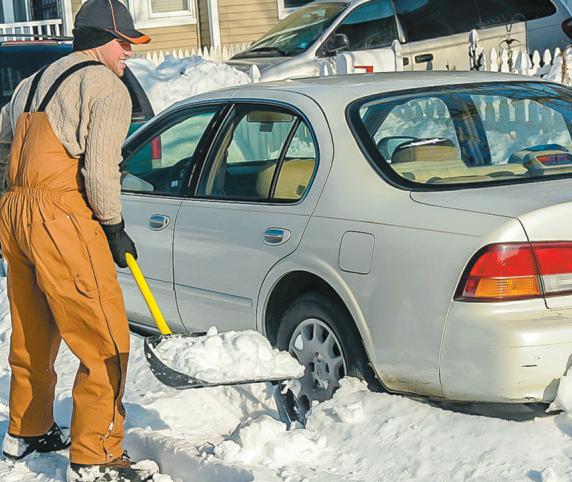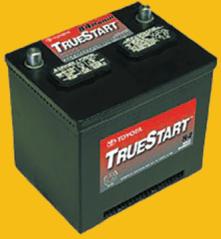
2 minute read
How to digout your carafter astorm

The arrival of cooler, shorter days is often a precursor to winter storms dominated by snowfall. Asnow-covered landscape can make for an appealing image. But heavy snowfall also makes for extra work, especially for drivers who must dig their vehicles out of the snow after each storm.
Some people live in suburban areas where they can park their cars in driveways or garages, while others live in cities and have to park on the street, where snow plows can do awonderful job of burying vehicles underneath mounds of snow. Rescuing acar or truckfrom apile of snow can be tricky and time-consuming, but there is a process that can make the job easier.
Begin by clearing out the tail pipe of the car. This is a vital first step because failure to do so can back harmful carbon monoxide gas and other fumes into the car. Take the time to clear out the rear of the car, including the taillights, so you will have improved visibility.
When the exhaust pipe is clear, turn on the car. Some people prefer to put the defroster on right away. Others wait until the vehicle warms up before doing so. Having awarmcar will melt some of the accumulated ice and snow and make it easier for you to clear the car.
The right tools make faster work of the task at hand. Ashovel is anecessity, and atelescoping snow broom/ ice scraper can be helpful. This allows you to safely push the snow off the roof of the car. Driving with snow and ice on the roof and hood is not only adanger to yourself and other motorists it could result in afine. Work from the top of the vehicle down. Otherwise, you will end up negating all of your work by throwing fresh snow on the areas you already cleared.
By now the defrosters should have kicked in sufficiently enough to make it simple to clear snow from the windshield and rear window. Use some deicing windshield fluid to dislodge wiper blades if they have frozen to the windshield. Some drivers leave their wiper blades standing on end and away from the windshield prior to abig storm to prevent them from freezing to the windshield. Consider this trick if you’re especially worried about the blades freezing to the glass. Use your shovel tocarefully remove as much snow as possible from around the tires. Be careful not to puncture the tire with ametal shovel. Try to create a tire path in the direction you plan to move the vehicle.
So if you will be backing out of the driveway, clearthe waybehind the car. If traction is aproblem, use abit of rock salt or cat litter behind the tires to give them more grip. Slipping acar mat under the tires also can provide much-needed traction.
Exercise caution if you are digging out acar on a busy roadway. Make yourself visible to other motorists and use traffic cones, if you have them, to keep drivers away from your vehicle. Do not shovel the snow in the path of oncoming vehicles.
Shoveling out after asnowstorm is ataskfew people enjoy. However, it is anecessity of the season and one that can be done safely and efficiently.






